
A trip through the glaciers of Tutka Valley
Last winter’s meager snowfall was followed by volcanic ash, then a warm sunny spring, melting the mountains back to bare ice and rock. Even amongst high peaks, the usual snow slopes were boulders and scree, bare rock fields with barely a hint of vegetation. Some of the dime-sized patches of moss might not have seen sun in years. Some of the rock might never have seen sun at all. It was a good time to visit the dead and the dying - the glaciers not long for this world.
We were walking through brand new country. From a viewpoint on a gravel ridge, we stared across the crevassed expanse of a glacier that might melt away without ever being given a name. On our maps, the white blobs of glaciers crisscrossed our route. Once imposing obstacles, but now only withered remains.
We walked on ice. We walked past newborn lakes. We skated down slopes of sharp scree, past cliffs scratched by vanished ice.
We were scrambling high in the passes above Tutka Bay, on a route chosen mostly for my mother Niki, who was visiting from Seattle. We were initially planning to backpack with a crowd of friends from Seldovia, but all of them had to duck out at the last minute, so we canceled our plans and schemed a new trip with Niki.
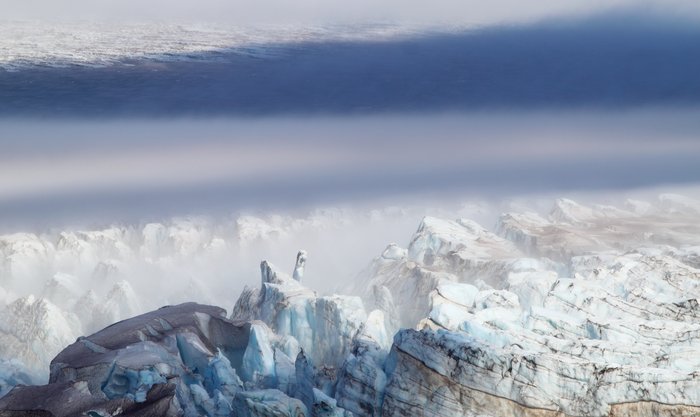
Bushwhacking
She’s an avid kayaker, trail hiker, and international wanderer - and bushwhacking is her one complaint about Alaska. In every phone conversation, she impressed upon us how much she disliked bushwhacking, and how she wasn’t willing to tolerate more than a tiny dose of the steep alder and devil’s club morasses we’d dragged her through on previous visits.
Without trails, some bushwhacking is inevitable. On our way up from the water at Tutka Bay, we wove through the devils club and sickly-looking blueberry bushes (devastated by last winter’s low snow) beneath the spruce forest. On our way down to the water at Tutka Bay, we scrambled down steep gullies of slippery grass and brush. Our chunk of the Kenai Peninsula is a lushly vegetated place. But in between, our route was high above the brush in the ice and rock - high in the land of yesterday’s glaciers.
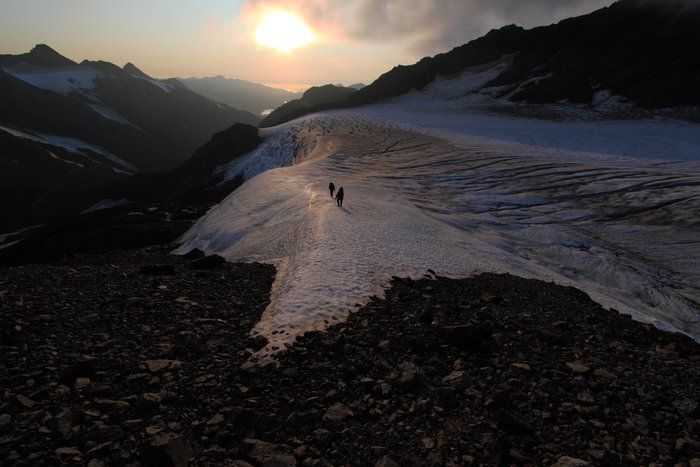
Weaving through the puzzle
“What do you mean it doesn’t look too bad?”
“What do you mean there’s probably a way?”
Minimal straightforwardness. Maximal uncertainty. I tried to explain to Niki that the fact that we had no idea if our proposed route was possible wasn’t really a problem. It just meant that for every climb, and every descent, we’d just have to wait and see. 100 foot contour lines are much too vague to show a 30 foot cliff. And if the map marked ice, we might find walkable ice. Or un-walkable crevasse-filled ice. Or walkable rock. Or un-walkable cliffs. There was no way to know, really, except to go there.
It had been a while since we’d done a trip like this. On our Journey on the Wild Coast, we almost never went anywhere so complicated. In the big picture of walking from A to B, it rarely makes sense. But the Tutka trip was just four days, and all we had to do was get back to where we’d started.
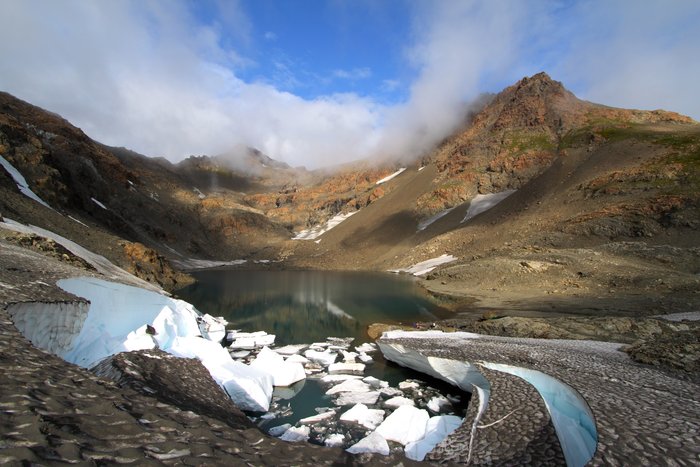
I still remember the first time I looked out over a corner of the Harding Icefield, in the summer of 2000. In my childhood of backpacking in Washington State, glaciers were only minor decorations on the flanks of giant mountains. But here, it was reversed. I saw tiny mountains poking out of a giant sheet of ice. I was awestruck. I still am. But the glaciers spilling out over the edges of the icefield are shrinking quickly. Where our map marks “Southern Glacier,” we know a rocky saddle we call “Southern Glacier Pass.” We know tricky routes that would have been impossible without glacier gear a few decades ago.
Walking the edges of shrinking glaciers, I feel like an explorer. In some places, we’re probably leaving the very first human footsteps, on very new land. Sharp rocks and mud pile on the edge of patches of dead ice, slippery underfoot. Tiny spots of green speckle the edge of rock fields, where lichens and grasses are spreading.
From the alpine ridges, it’s hard to see the negatives of global climate change. We can see the shrinking ice, but not the ocean acidification, or the erosion, or the sea level rise, or the shifting weather patterns that leave both crops and native species struggling where they used to thrive. We’ve been spewing ever increasing amounts of carbon dioxide into the atmosphere since the Industrial Revolution got rolling. The climate is already changing.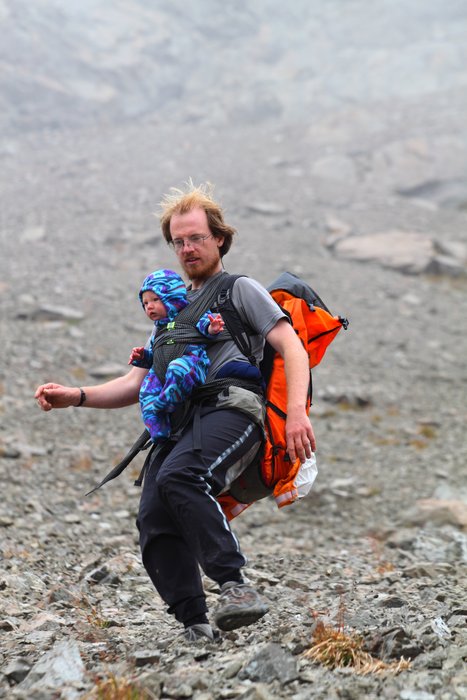
There will be some winners. Perhaps the alpine lichens that take over the former realm of the glaciers will thrive. But most of us - plants, animals, people, civilizations - are adapted to the way things are now. Change brings pain and extinction, upheaval and hardship. Our fossil-fuel intensive society seems stuck in a hopelessly entrenched pattern. We’ve been doing this for a long time compared to a human life. But it’s a short time compared to the life of humanity. We can’t escape climate change altogether - but if we jump on it now, we might soften the blow.
A delightful encumbrance
This time we counted. About 17 pounds for a diapered and dressed baby. 1 pound for the wrap to carry him in. Another 4 pounds of extra clothes, diapers, and sleeping gear for Katmai. Altogether, it was 22 pounds of additional weight to add to the 65 pounds or so we were already wearing or carrying between the two of us (food for 4 days, water, packrafts, clothing, camping gear, etc…). And he’s only getting bigger…
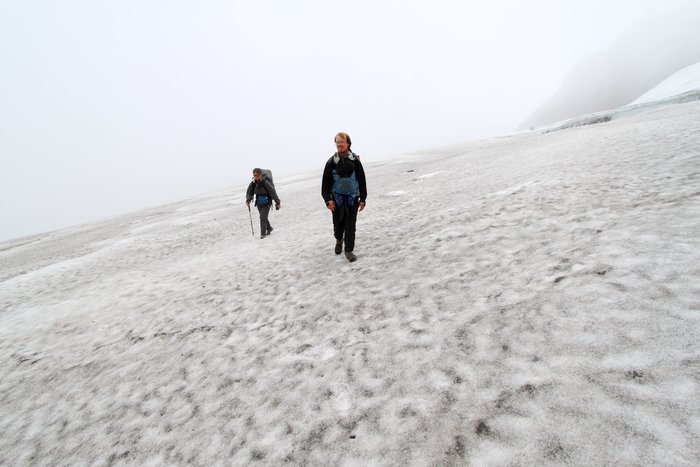
Katmai loves hiking. He doesn’t bat an eye when daddy skates down a steep scree slope with him. He doesn’t notice or care about the difficult terrain. He trusts us to keep the bushes out of his face, not to fall on the boulders or ice, to keep him warm and fed and dry. He rides in his snuggly spot, watching the world go by, occasionally being set down to play in it. And what an interesting world it is! Always new bushes, always new rocks (why won’t mommy and daddy let me stick those little ones in my mouth?). Packrafting is more boring - I suppose he’ll have to be a little older to truly see the light on that one. I wonder what impression our adventures are leaving on his little brain.
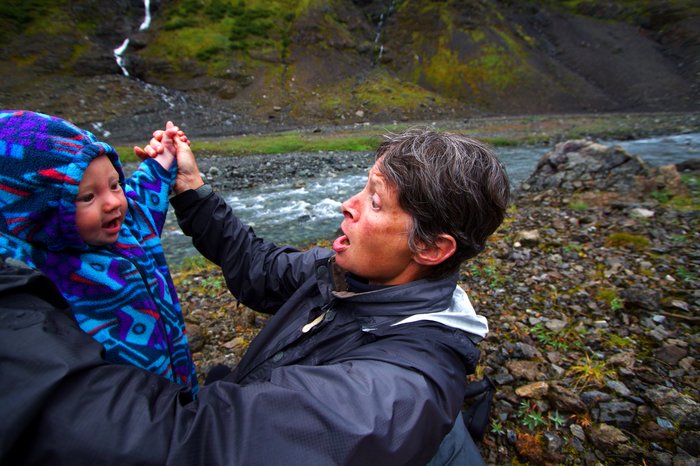
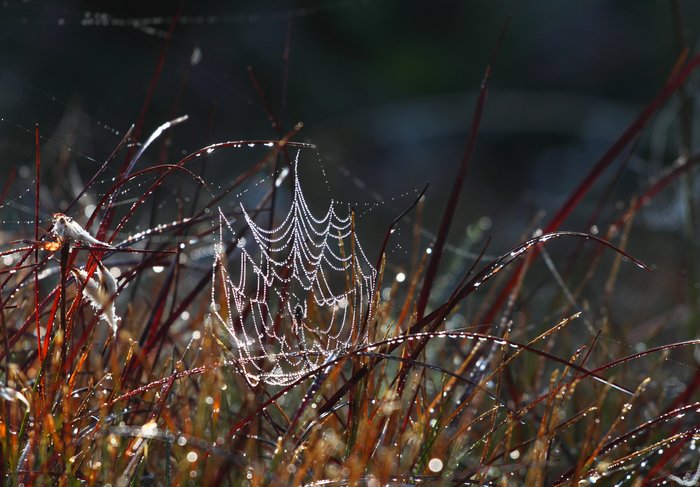
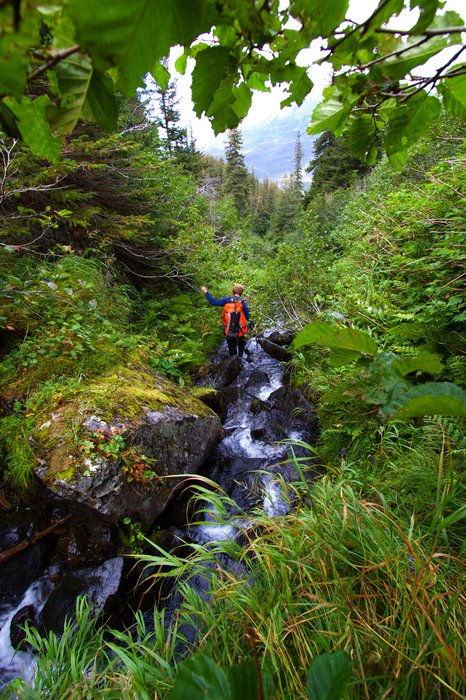
Created: Jan. 19, 2018